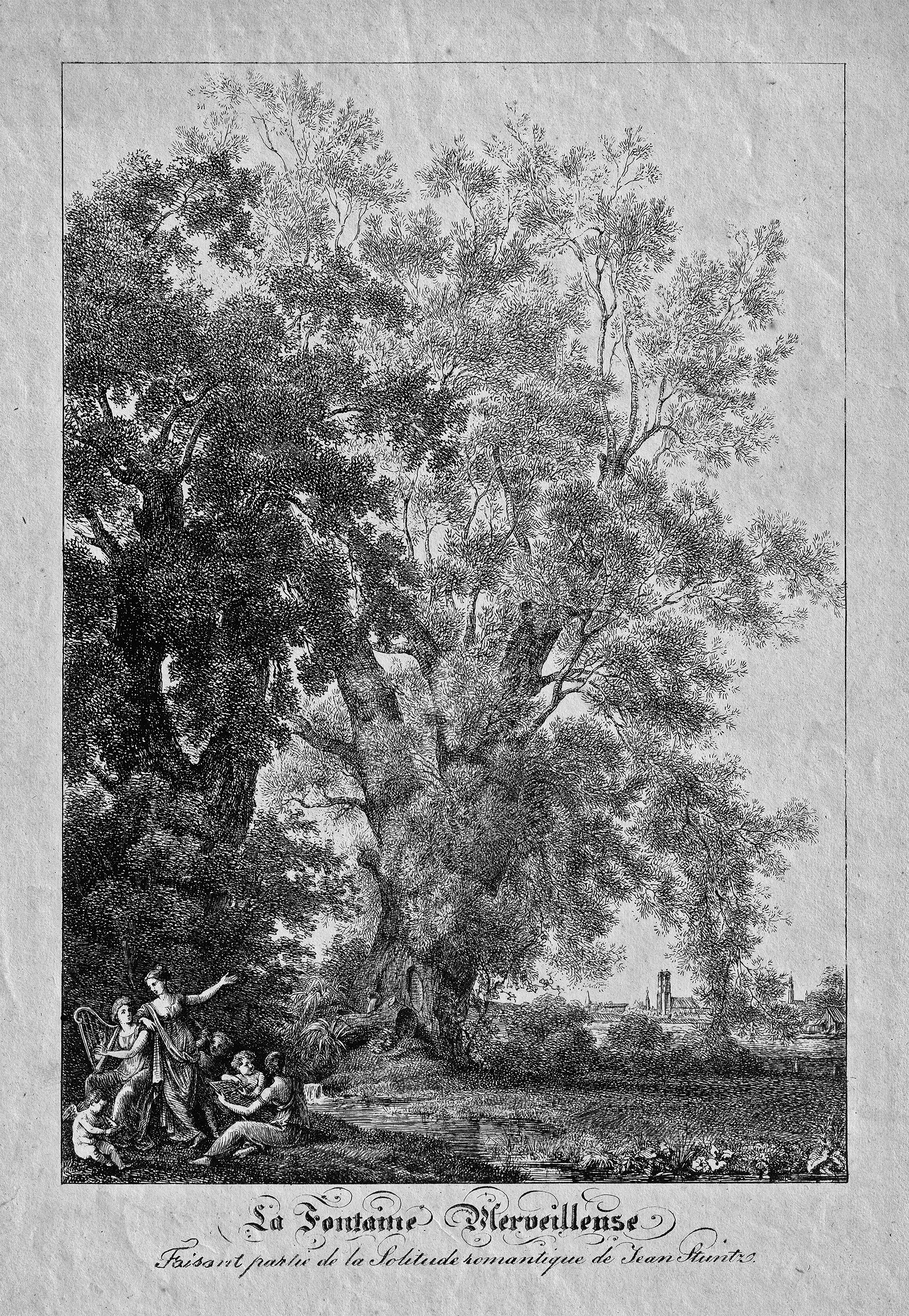Loading the page ...
Johann Baptist Stuntz
(1753 Arlesheim – 1836 Munich)
La Fontaine Merveilleuse, faisant partie de la Solitude romantique de Jean Stuntz. Lithograph with grey wash on ivory-coloured wove paper. 32.1 x 22.4 cm. Circa 1813–14. Weishaupt, Verzeichnis, p. 21, A11 47 (as Electrine Stuntz); Dussler 6a (as Johann Hartmann); Winkler 834.3; P. von Freyberg, “Marie Electrine Freifrau von Freyberg, geb. Stuntz (1797–1847)”, in: Oberbayerisches Archiv, 110 (1985), p. 239, no. A9.
Next to nothing is known about the first 27 years of Johann Baptist Stuntz’s life. Around 1780/81 the artist lived in the Swiss city of Biel, where he collaborated with the painter and print maker, Johann Joseph Hartmann (1752–1830) and produced vedute in gouache of the local countryside. As the French Revolution broke out and gained ground in Basel, Stuntz entered the military, serving as an engineer officer in Alsace and as a civil commissioner in the department of the Jura (Freyberg p. 9–10). In 1795 Stuntz settled with his family in Strasbourg, where he opened a drawing school and was active as an art dealer. However, in 1808 the family moved to Munich for economic reasons as well as to protect Joseph Hartmann’s eldest son, who proved to be a remarkably talented musician and composer, from compulsory military service in Napoleon’s army. In Munich Stuntz became acquainted with the technique of lithography, which was invented in the city by Alois Senefelder in 1798. Around the turn of 1809/10 Stuntz founded a lithograph printing house together with the chief librarian of the court library, Johann Christoph Freiherr von Aretin (1773–1824), the director of the royal art collections, Johann Christian von Mannlich (1741– 1822), and the draughtsmen, Johann Nepomuk Strixner (1782– 1855) and Ferdinand Piloty (1786–1844). On 1 May 1809 the enterprise began publishing the “Œuvres Lithographiques”, a collection of 432 prints reproducing the most important drawings and paintings from the royal Bavarian collection.
In the following years Stuntz’s company published numerous incunabula of lithography and played a key role in the spread of this technique in Germany. Besides their city domicile Stuntz and his family also occupied the Gipsmühle, a gypsum mill, at Thalkirchen as of 1812. The owner of the property, Lieutenant General Joseph von Rechberg (1769–1833), was himself an art lover and a benefactor of Stuntz’s daughter Electrine, who had considerable artistic talents. At the centre of this property stood the so-called Wunderbrunnen, an old willow from which sprang a small source, which was to inspire several members of the Stuntz family. Johann Baptist made two lithographs in which the Wunderbrunnen occupies a central place, the present print being one of these two. Electrine also depicted the source in a painting and Joseph Hartmann praised it in his “Hymne à la fontaine merveilleuse”, which he composed after a text by Jean-Jacques Rousseau (Freyberg pp. 14–15).
The first of Johann Baptist’s two prints was designed as the title page of Joseph Hartmann’s Hymne around 1813. The present lithograph with its gentle pastoral mood appeared shortly afterwards (Freyberg, p. 239) and is of great rarity. The picturesque, lush willow tree dominates the composition. However, in the far distance the viewer can perceive the skyline of the Frauenkirche, the hallmark of the city of Munich. A very fine, nuanced impression with large margins. Minor ageing, otherwise in impeccable condition.
Contact us for further information